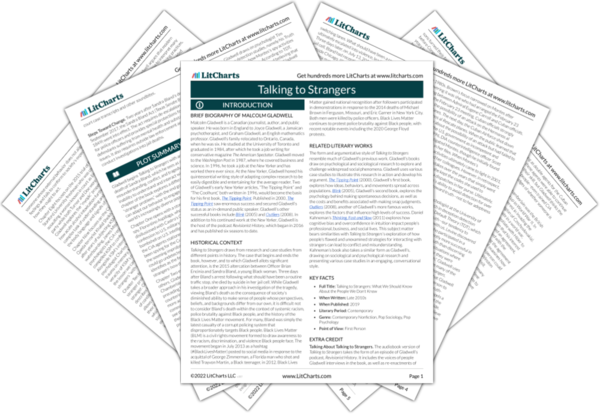Brock Turner is a former Stanford University student who was convicted on three felony charges of sexual assault in 2016. Turner and the woman he assaulted, known in court documents as , met at a fraternity party in January 2015. Allegedly, they drank, danced, and engaged in consensual sexual activity together before exiting the party. At some point, Doe lost consciousness. Two Stanford graduate students spotted Brock on top of the unconscious Doe and confronted him. When Turner attempted to flee, the graduate students apprehended him until authorities could arrive. Gladwell sees the Turner case as an instance where alcohol’s myopic characteristics make the already difficult chance of understanding strangers—and discerning their consent—more difficult.
